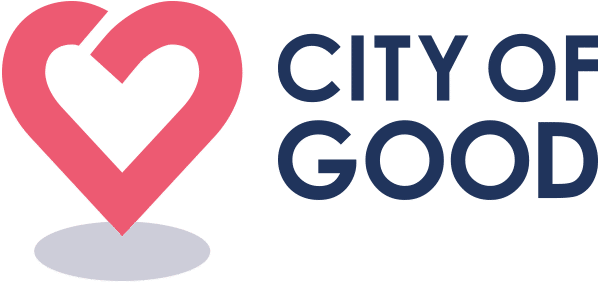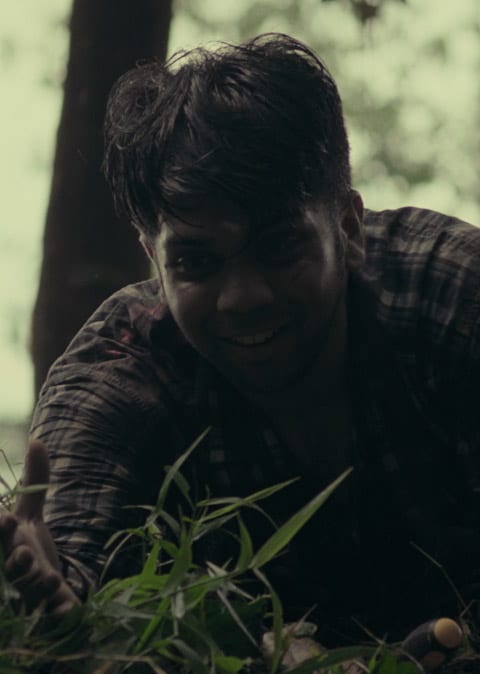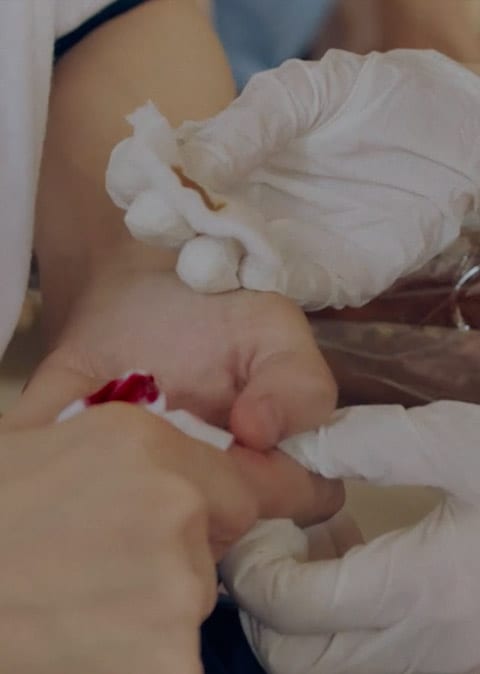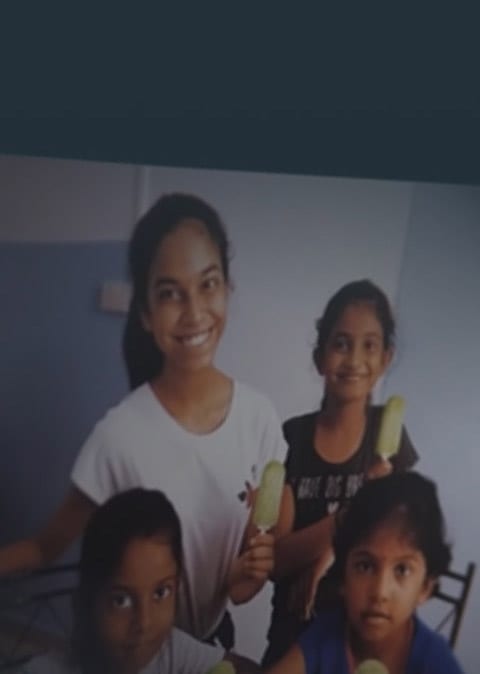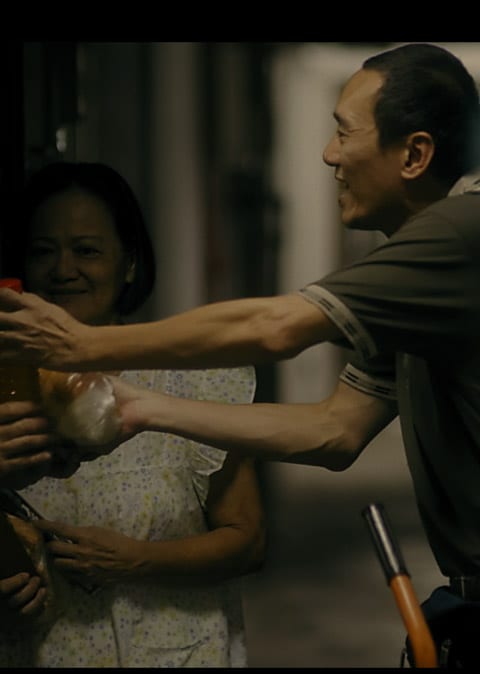A ripped pair of jeans, a faulty oven, a hairdryer that doesn’t blow hot air, and a dining chair with a wobbly leg. Under normal circumstances, these items would probably end up in the bin. But a community of volunteers is looking to change how Singaporeans think of their broken stuff.
“The simple act of repairing things encourages people to take ownership of their possessions instead of throwing them away,” says Danny Lim, a Community Innovator at Repair Kopitiam.
Danny, highlights a problem that’s all too common in modern society. With Singaporeans having more disposable income than ever, the consumerist culture of discarding items when they break or no longer work is contributing to a burgeoning solid waste problem.
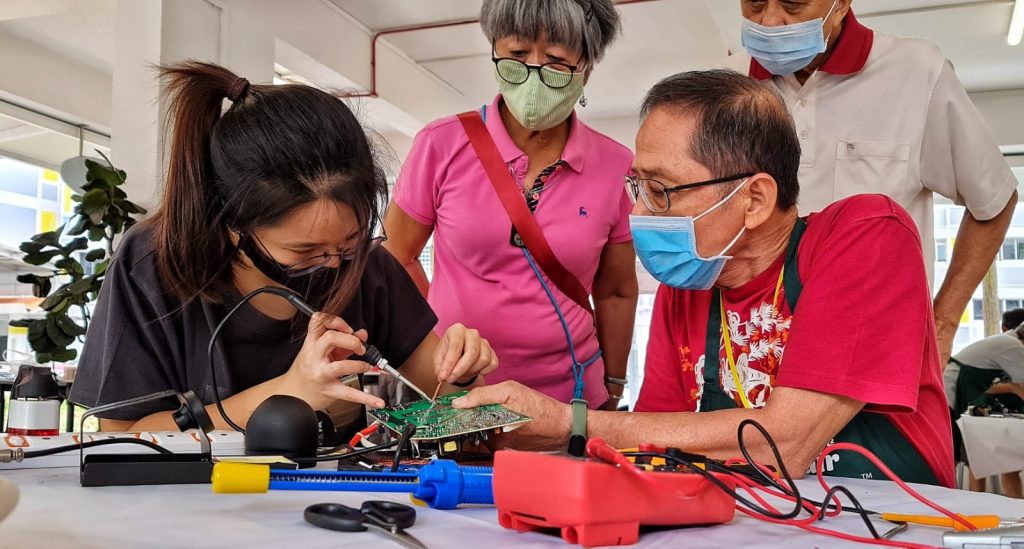
According to the National Environment Agency, Singapore produced over 5.9 million tonnes of solid waste in 2020 with recycling rate taking a dive to 52%. Leftover waste items were incinerated and sent to Semakau Landfill, which is projected to run out of space by 2035.
Troubled by Singapore’s Buy-and-Throw-Away culture, Repair Kopitiam has been cultivating a community that encourages people to be more mindful about repairing things rather than throwing them away.
Challenging The Buy-And-Throw-Away Culture
Repair Kopitiam is a community-based initiative inspired by Repair Cafe in the Netherlands. Atiqa, from the founding team of Repair Kopitiam explains, “We put a little Singapore twist into it and called it Repair Kopitiam—the logo is a kopi cup with a stethoscope.”
Since 2014, Repair Kopitiam has been run by coaches and volunteers. They welcome anyone in the city looking to bring in almost anything that needs repair, such as household appliances, clothes that need mending, or furniture.
Those seeking to repair their belongings receive coaching on how to fix their items themselves without having to pay for anything apart from replacement parts. They are taught by volunteers who typically don’t have technical backgrounds but enjoy repairing and crafting things, or simply love helping out their neighbours who need to fix broken items.
Volunteers can also join and work with coaches to develop their repair skills in a three-month programme, after which they themselves become coaches to new volunteers—cultivating a circular chain of training.
Repair Kopitiam has trained more than 3,000 volunteers of all ages with more than a hundred currently active, Danny shares. Repairing remains attractive to individuals who are interested in picking up new skills and solving Singapore’s waste problem.
“Goods are brought to us by the owner. We coach the owner to repair their own items. These repaired items are returned to the owner,” says Danny.
He adds, “Having volunteers step up and become coaches empowers them to take ownership of their knowledge and pass on their skills to others. This culture of learning and sharing repair knowledge is what makes Repair Kopitiam a thriving community.”
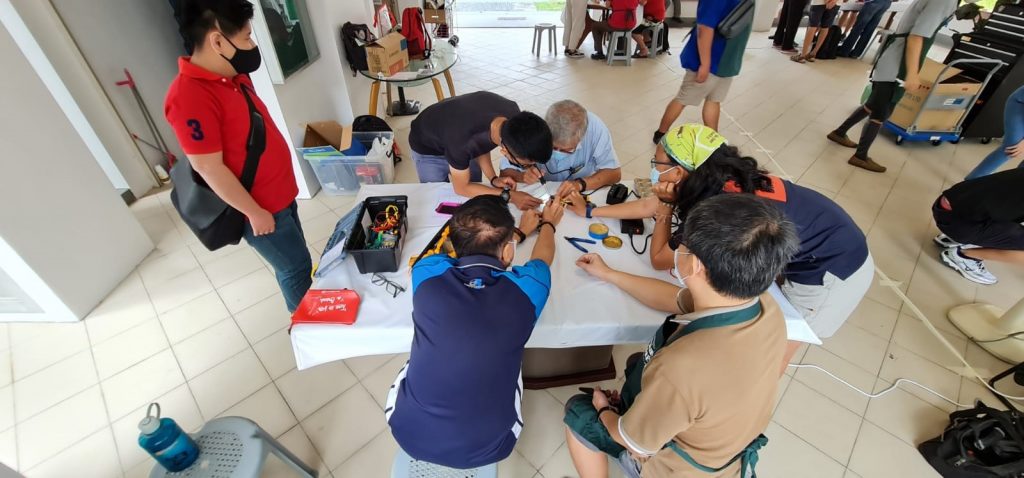
Cultivating And Practising Shared Values As A Community
For Repair Kopitiam, repairing is a shared community activity built on the fundamental truth that “many things can be repaired” with the right tools and knowledge.
The community’s meetings, however, are more than just about making repairs on everyday items. It’s as much about bonding and celebrating friendships based on shared values — just like how people gather at a kopitiam (traditional coffee shop) to break bread and spend valuable time with friends and loved ones.
“Repair Kopitiam builds bonds by creating interesting events, celebrating friendships, acknowledging and appreciating volunteers, and boosting growth in knowledge,” Danny notes.
During repair meetups, members gain repair skills that change their perceptions about the value of objects. “Some knowledge or hacks are learnt during this process,” Danny explains, “but the systematic approach to repair is a journey only a truly passionate person will pick up.”
Building A Kampung Culture Of Learning & Sharing
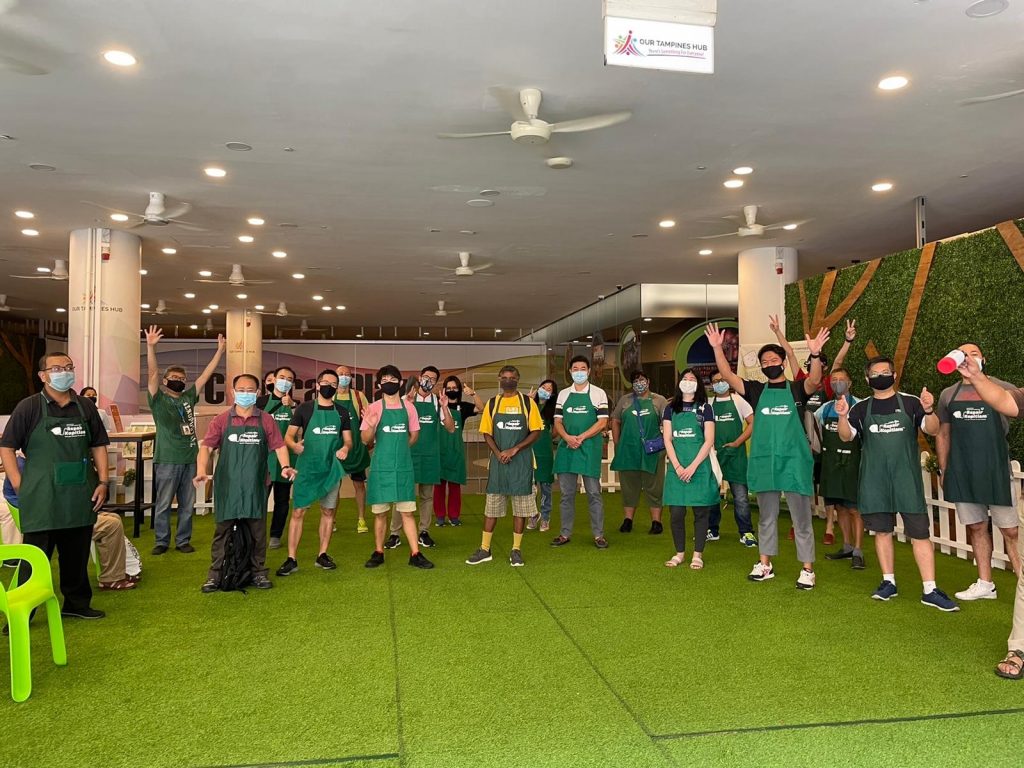
Despite sharing the basic ideals of repairing instead of discarding items with Repair Cafe, Repair Kopitiam is by no means a simple copycat. The community prides itself on a unique culture that promotes a “kampung spirit”—the sense of neighbourliness and camaraderie that Singapore culture and history is rooted in.
This kind of community engagement happens organically, so much so that Danny says he has never had to encourage anyone to join Repair Kopitiam—they simply do.
“Most will naturally attend because they want to,” he says. “I make sure it is easy to volunteer with us and that the community is a welcoming, big family.”
As the Covid-19 pandemic continues to shut down physical social gatherings, Repair Kopitiam overcame restrictions by conducting virtual meetings. Under this New Normal, coaches are currently doing their best to help the community perform simple repairs safely using basic tools. As Danny notes, “the basic activity remains the same but we will build a more resilient form for situations that don’t allow us to physically meet up.”
Yet, the challenge remains as repairs cannot be usually done online, due to safety issues when using tools, lack of experience, and requires participants to be comfortable with using online platforms. Nevertheless, Repair Kopitiam remains committed to its goal of training people to repair their own items.
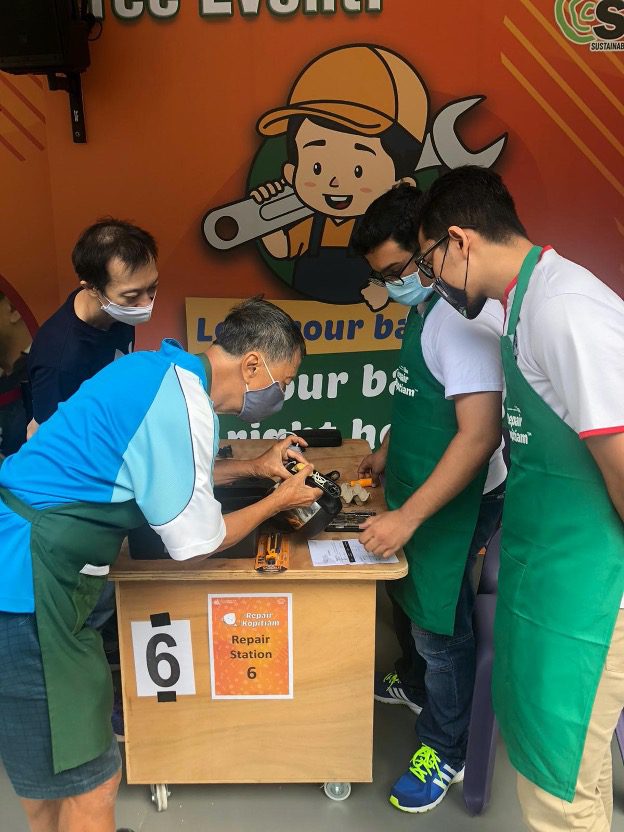
The Secret Ingredient: Community Leadership
A large part of Repair Kopitiam’s success can be attributed to its unique approach to community leadership. At present, representatives at different Repair Kopitiam venues form a part of the community’s leadership.
“They are also responsible for driving (repair meetups) at each location,” Danny adds.
This leadership structure allows them to seamlessly communicate, share best practices, and understand the demands of each Repair Kopitiam location. But with its growing membership base, Danny says they might soon need to restructure to stay agile and improve the efficiency of discussions and communicating information.
As Repair Kopitiam continues to grow as a community, their goals have also become more ambitious. They have plans to collaborate on small pilot projects with various non-profits and businesses, and intend to include green recovery to stimulate economic recovery while cultivating better attitudes about waste disposal.
“We hope to bring back recovery to our community without going back to practising poor unsustainable practices [and] will achieve this by introducing new green options that are easy and simple to implement,” Danny says.
For this reason, Repair Kopitiam doesn’t repair items if doing so means competing with the businesses that sell them. Think laptops and bikes—the shops that sell these items also offer repair services. Singaporeans are thus encouraged to support these businesses.
For A Greener Future
On top of current efforts, SGTech, Sustainable Living Lab (SL2), and Facebook launched the new eRevival Square, a scaled-up initiative based on Repair Kopitiam aims to
- Build and reinforce a repair culture among Singaporeans
- Raise awareness about the national movement towards a more sustainable future
- Celebrate the united front of key stakeholders towards the problem of e-waste
- Cultivate a habit of consciousness towards the use of electronics
In addition to existing services provided by Repair Kopitiam, eRevival Square also sees a new station dedicated to Information and Communications Technology (ICT) repairs (i.e. phones, tablets, computers, etc).
eRevival Square also relies on a tri-sectoral collaboration between government, industry partners, and the community to encourage Singapore to tackle the e-waste problem. Companies are encouraged to pledge themselves to reduce e-waste, with eRevival Square targeting 100 pledges by end 2021. Members of the public are also encouraged to pledge themselves to this cause, with a goal of 8000 virtual pledges by the end of 2021.
Together with existing initiatives by Repair Kopitiam, they aspire to add a fourth ‘R’ of repair to the existing ‘3Rs’ of ‘reduce, reuse, and recycle’. By reaching out to all stakeholders, not just the public but to corporations and businesses, they hope that Singapore adopts a circular economy, one which rests on sustainable production, sustainable consumption, sustainable waste management, and thus sustainable living.
Celebrating Successes — Big And Small
Repair Kopitiam has come a long way from its humble beginnings. “Since 2014, our repairs’ success rate has improved from below 50% to over 60% (and the) capacity of engagements has increased significantly,” Danny shares.
Repair Kopitiam’s success also proves that while repair culture is not yet mainstream in Singapore, there is a genuine interest in change. Plans are in the works to expand Repair Kopitiam to cover the whole of Singapore, making it more accessible for them to encourage Singaporeans to repair and upcycle their items before throwing them away.
As Danny puts it, “Most things can be repaired given the proper knowledge and patience. Giving new life to old things is the new sexy of the future.”



